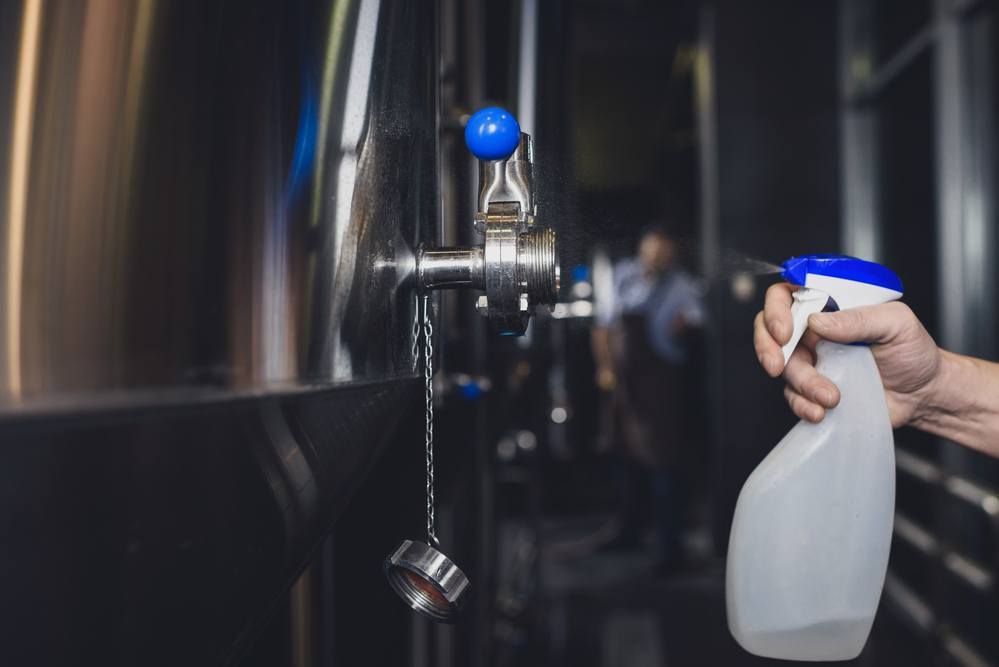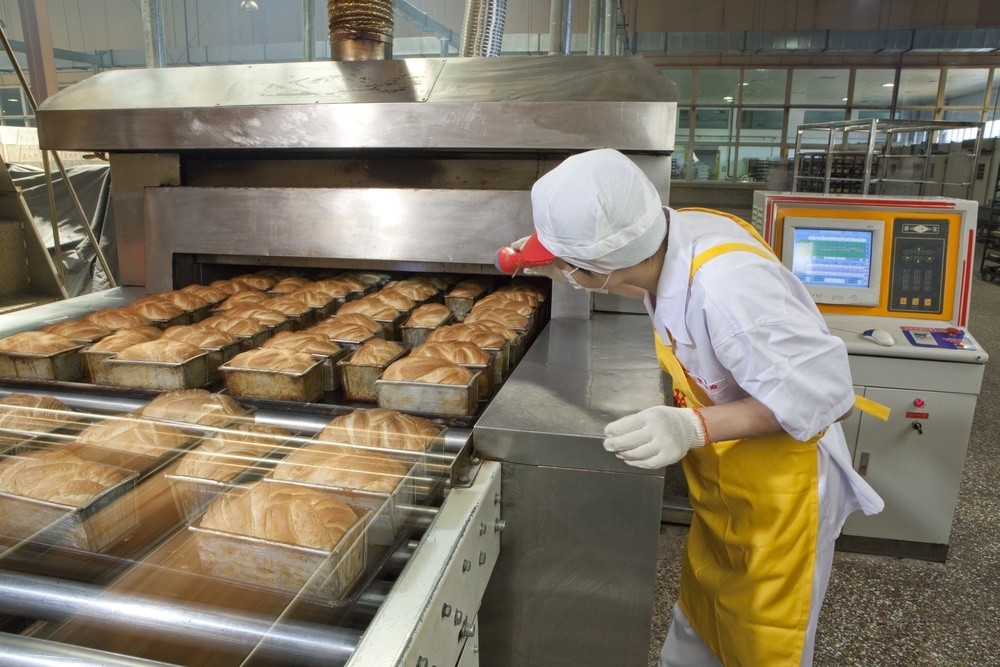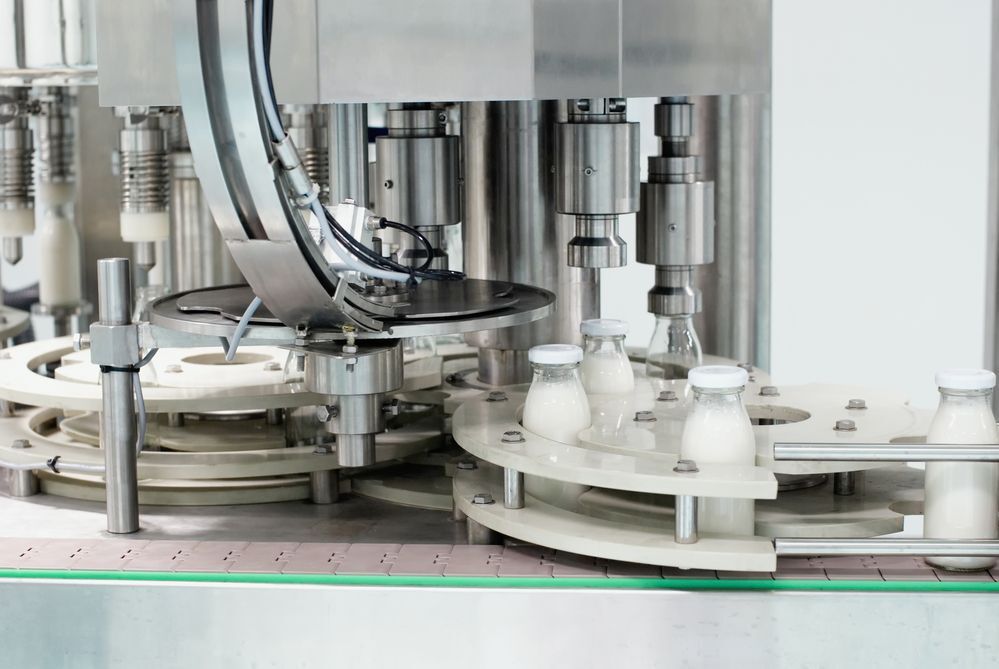Recent technology has progressed manufacturing operations in almost every industry with innovations like the General Kinematics Toaster Conveyors, KWIK-TROK™ Horizontal Motion Conveyors, and SPIRA-FLOW™ Vibrating Spiral Elevators which can contribute greatly to streamlining your food manufacturing process.
The secret lies in improving equipment reliability and avoiding downtime in your food processing operation. The failure of a single piece of equipment can halt production. Some studies have shown that downtime for a typical food packaging line can cost $150 per minute in lost revenue. So even just 60 minutes of downtime can cost a company $9,000 in lost revenue; and with an average downtime of over 400 hours per year in the food processing and packing industry, the costs add up quickly.
Too often, companies forget the basic components of large-scale food production.
Conduct Consistent Cleaning and Maintenance

The first and easiest way to prevent equipment breakdown is consistent machine cleaning and maintenance. Instituting a scheduled (and documented) cleaning and maintenance program can benefit your processing in a number of ways:
– Minimizing wear and tear on machines
– Saving you money on repair and replacement parts
– Extending the overall life of your equipment
Every piece of equipment has an owner’s manual that details the operating procedures as well as the recommended maintenance program. Give the manual a fresh look every so often, follow its recommendations, and don’t skimp on maintenance or cleaning costs.
High-quality oil may cost more upfront, but it will pay dividends in the long run by keeping machines running efficiently and for an extended period of time. Just like automobiles, food processing equipment manufacturers have a recommended list of preventive maintenance measures to ensure you’re on the right schedule to maintain equipment warranties. GK vibratory equipment has fewer moving parts but other items to be inspected on a regular basis include: stroke measurements, motors and bearings .
Proper Employee Training
Employees should not only know how to safely operate each piece of machinery; they should also know that they play a significant role in making sure the equipment runs smoothly. Your staff should also be able to identify potential problems before they happen. Understanding common red flags can be the difference between a quick fix and a crisis.
The question to ask is: Are the employees using the equipment properly? Many manufacturers offer programs to train employees on critical equipment to ensure the machinery operates efficiently for the expected life like General Kinematics’ VIB-101™ classes.
Invest in Equipment Redundancy
We all know that nothing lasts forever. All equipment has some predefined life expectancy or operational life. Estimates for the design life of equipment is usually delineated by the number of hours they are designed to operate or a defined number of start and stop cycles.
However, before that life expectancy is reached, it can be assumed that some parts of a machine will wear out quicker than others. For instance, on a water-cooled engine, it is common for a water pump to fail long before the engine has reached its performance life. Replace the water pump, and the engine is running again.
It is a good strategy to keep replacements for those key components on hand at all times.
Maintenance personnel should understand the equipment well enough to know which parts will wear, bend, or break under use and have a supply of replacements on hand.
In cases where a machine is not easily serviceable or does not have replaceable parts, such as air compressors, heat elements, or refrigeration that are vital to operations, a spare module should be on hand for quick replacement.
Incorporate Automation
Automation has come a long way in just a few years. Robotic arms perform precise repetitive movements without tiring or slowing down. When artificial intelligence is added to the operation, robots are able to perform multiple tasks with speed and accuracy.
Robotic equipment can operate in extreme heat and cold temperatures, making it easier to maintain proper food temperatures that prevent bacteria growth. Food handling robots and GK food-grade equipment are also made of materials that resist contamination and are easily cleaned.In addition to improving speed and efficiency, robots are also able to dispense precisely measured amounts of ingredients to ensure food product consistency.
When it comes to overall equipment life, a simple processor such as a sequencer can allow multiple compressors to communicate with one another and coordinate demand to improve each machine’s operating efficiency and perhaps extend equipment life.
General Kinematics continues to perfect vibratory conveyor technology, and expand its use in thousands of bulk handling and processing applications, including food manufacturing. GK versatile vibrating conveyors are easy to maintain and move materials at the volume and speed you need. Contact us today to learn more.










